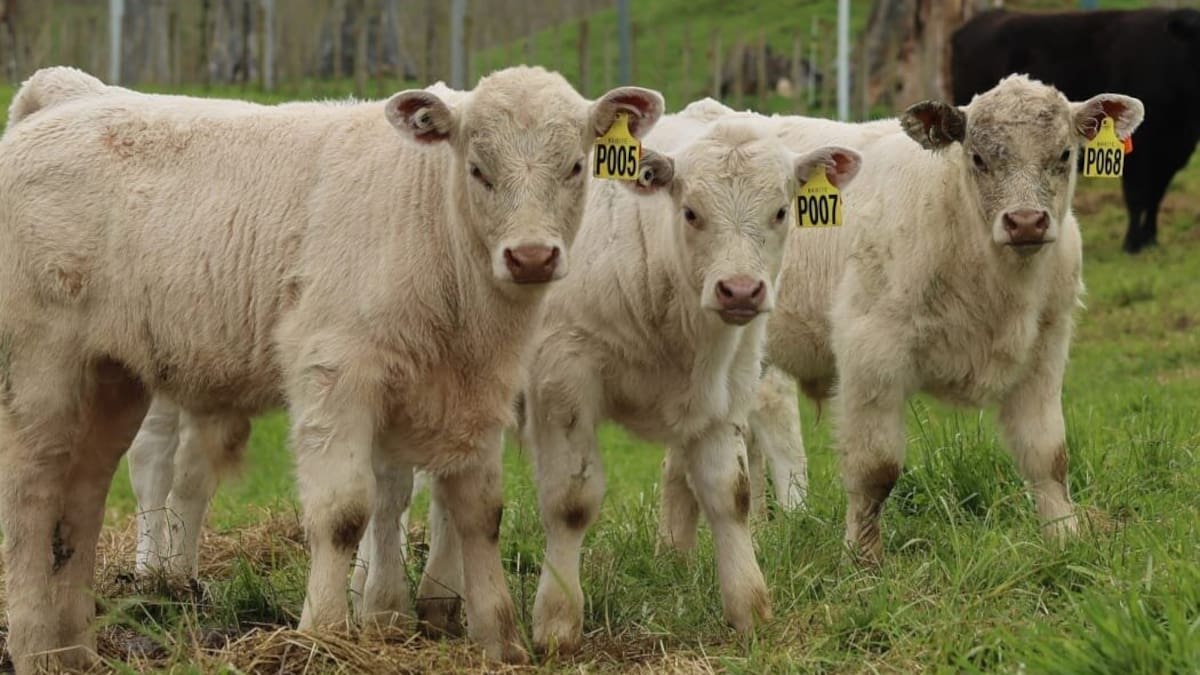The breeding programme focused on key traits including short gestation, ease of calving and rearing, strong growth and meat quality.
“What the dairy farmer really looks for in beef animals, or beef bulls putting over their dairy cows, is an easily identifiable animal, so the coat colour is very important,” Chin said.
“The coat colour is coming through from the Charolais.
“But calving easy, easy to rear, good live weight gains that’s coming through from the Stabilizer.”
Chin said the launch of Synergizer marked an important milestone in the co-operative’s dairy-beef journey.
“Backed by world-class science, robust data and rigorous progeny testing, Synergizer has been developed to deliver a reliable, profitable and sustainable option for dairy-beef systems.”
The Livestock Improvement Corporation has partnered with Pāmu, combining genetics from a Nebraskan breed developed in the 1970s, known as the Stabilizer, with that of the French Charolais, to create the Synergizer.
A recent Rabobank report found dairy-beef had a potential value of more than $1.2 billion each year.
Pāmu chief executive Mark Leslie said Synergizer was also excited about the potential of the collaborative project.
“By combining genetics expertise, farming knowledge, and a shared vision, we’re creating a solution that will deliver long-term benefits across the entire dairy-beef value chain and build resilience, productivity and sustainability for future generations of farmers.”
About 350 first-cross beef on dairy calves were born this year.
The first frozen semen inseminations will be available in limited quantities from spring next year, with more available from spring 2027.
– RNZ

